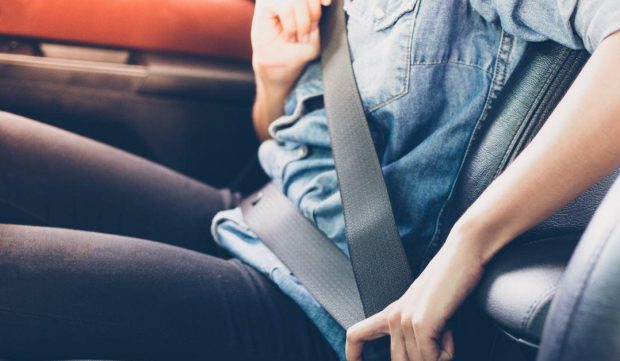President Joe Biden is traveling to Wisconsin to announce details of a new plan to ease student loan debt for millions, a trip that comes a week after primary voting in the Midwest battleground highlighted weaknesses for the Democratic president and Donald Trump, his Republican challenger.
Biden was making the announcement Monday in Madison, the state’s liberal capital and home of the University of Wisconsin’s flagship campus.
The new federal rule paving the way for student debt relief is not expected to be issued by the time the president speaks, but Biden will highlight a plan the Department of Education started working on after the U.S. Supreme Court last year foiled his first attempt to forgive hundreds of billions of dollars in student loan debt.
Immediately after the court said Biden needed Congress to approve his original plan, the president said the decision was a “mistake” and “wrong” and announced that Education Secretary Miguel Cardona would undertake a new process using his authority under the Higher Education Act to waive or compromise student loan debt in specific cases.
A fresh announcement on student loan relief, an important issue for younger voters, could help energize parts of Biden’s political coalition that have become disillusioned by his job performance. These are people whose support the president will need to defeat Trump in November.
In Wisconsin’s primary elections on April 2, nearly 119,000 Republicans voted for a GOP candidate other than Trump, the party’s presumptive nominee. And more than 48,000 Democratic voters chose “uninstructed” instead of Biden, more than double Biden’s narrow margin of victory in Wisconsin in 2020.
Nearly 15% of Democrats in Dane County, home to the University of Wisconsin and Madison, voted “uninstructed.” That is nearly double the statewide total of 8%.
Democratic U.S. Rep. Mark Pocan, who represents Madison in Congress, said he was struck that concerns about Israel’s war against Hamas in Gaza were top of mind among voters at five town halls over the past two weeks in more rural parts of his district.
“I was surprised to see the intensity on the issue of Gaza coming not from a student voice out of Madison, but older voters in more rural parts of the district,” Pocan said.
Pocan said the number of “uninstructed” votes shows the concern in Wisconsin and that Biden needs to address it. He said he planned to talk directly with Biden about it on Monday.
“I just want to make sure he knows that if we’re going to have a problem, that could be the problem in Wisconsin,” Pocan said.
Biden’s new plan would expand federal student loan relief to new yet-targeted categories of borrowers through the Higher Education Act, which administration officials believe puts it on a stronger legal footing than the sweeping proposal that was killed by a 6-3 court majority last year.
The plan is expected to be smaller and more targeted than his original plan, which would have canceled up to $20,000 in loans for more than 40 million borrowers.
The proposal is expected to cancel some or all federal student loans for more than 30 million Americans, the White House said. The Education Department plans to issue a formal proposal in the coming months, with plans to start implementing parts of the plan as early as this fall.
“President Biden will use every tool available to cancel student loan debt for as many borrowers as possible, no matter how many times Republican elected officials try to stand in his way,” White House press secretary Karine Jean-Pierre said in a call with reporters.
Details released by the White House on Monday largely mirror a plan drafted by the Education Department over the past several months through a federal rulemaking process. It lays out five categories of borrowers who would be eligible to get at least some of their federal student loans canceled if the rule is approved.
The plan’s widest-reaching benefit would cancel up to $20,000 in interest for borrowers who have seen their balance grow beyond its original amount because of unpaid interest. Borrowers could get the entirety of their interest erased, with no limit, if they are enrolled in an income-driven repayment plan and have annual incomes of less than $120,000 or couples making less than $240,000.
That part of the plan would forgive at least some unpaid interest for an estimated 25 million borrowers, with 23 million getting all their interest erased, according to the White House.
An additional 2 million borrowers would get their loans canceled because they’re eligible for other forgiveness programs but have not applied. The Education Department would identify borrowers who are eligible but haven’t applied to programs such as Public Service Loan Forgiveness.
Borrowers who have been repaying their undergraduate student loans for 20 years or more would be eligible to get any remaining debt canceled, along with those repaying their graduate school loans for 25 years or more.
The plan would forgive debt for those who were in college programs deemed to have “low financial value.” It’s meant to help those who were in programs that ended up losing eligibility to receive federal student aid or programs found to have cheated students.
A final category would cancel debt for borrowers facing hardships that prevent them from repaying their student loans. The White House says millions of borrowers could get forgiveness if they’re at high risk of defaulting on their student loans or are burdened with medical debt or child care, among other criteria.
“This administration will begin to cancel up to $20,000 in interest for millions of borrowers, and full loan forgiveness for millions more this fall,” Cardona said in a call with reporters. “That’s on top of the $146 billion in student loan debt relief for 4 million Americans that we’ve already approved, more than any other administration in our country’s history.”
A series of hearings to craft the rule wrapped up in February, and the draft is now under review. Before it can be finalized, the Education Department will need to issue a formal proposal and open it to a public comment period.
The latest attempt at cancellation joins other targeted initiatives, including those aimed at public service workers and low-income borrowers. Through those efforts, the Biden administration says it has canceled $144 billion in student loans for almost 4 million Americans.
Biden was stopping in Chicago for a campaign event before returning to the White House late Monday.
___
Associated Press writer Scott Bauer in Madison, Wisconsin, contributed to this report.




